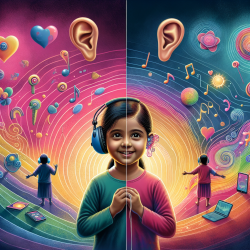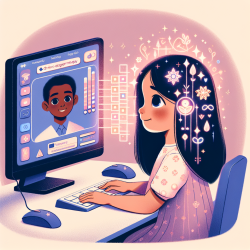Introduction
In the ever-evolving landscape of special education, understanding the intricacies of communication is paramount. The recent research article, Exploring the cerebral substrate of voice perception in primate brains, offers groundbreaking insights that can significantly enhance therapy practices. This research delves into the cerebral mechanisms underlying voice perception in primates, providing a window into the evolution of human language and communication.
The Voice Patch System
The study introduces the concept of a 'voice patch system' in primate brains, a network of interconnected cortical areas dedicated to processing conspecific vocalizations (CV). This system is comparable to the face-processing system in the visual cortex, highlighting the evolutionary significance of voice perception. For practitioners, understanding this system can lead to more effective communication strategies in therapy, especially when addressing students with communication challenges.
Implications for Therapy Practices
Integrating the findings from this research into therapy practices can be transformative. Here are some practical applications:
- Enhanced Communication Strategies: By recognizing the neural basis of voice perception, therapists can develop targeted interventions that leverage auditory stimuli to improve communication skills in students.
- Individualized Therapy Plans: Understanding the variability in voice processing among individuals can help tailor therapy plans to meet the unique needs of each student, particularly those with auditory processing disorders.
- Multisensory Approaches: The research underscores the importance of integrating auditory and visual cues in therapy, promoting a holistic approach to communication development.
Encouraging Further Research
The study also opens avenues for further research. Practitioners are encouraged to explore how these findings can be applied to diverse educational settings and to consider conducting their own research to expand on these insights. Collaborative efforts between neuroscientists and educators can lead to innovative strategies that enhance learning outcomes for students with special needs.
Conclusion
The insights from the research on voice perception in primate brains offer a valuable framework for improving therapy practices. By embracing these findings, practitioners can foster more effective communication and learning experiences for their students. As we continue to unravel the complexities of human language evolution, the potential for transformative educational practices becomes ever more promising.
To read the original research paper, please follow this link: Exploring the cerebral substrate of voice perception in primate brains.










